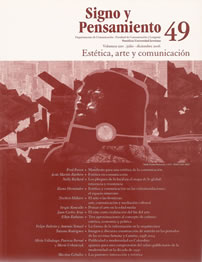Abstract
Many have asserted that the ideal of art, defended by modernism, has reached its end. The story founded by modern art does not apply any more to certain contemporary practices, something that has led to think that, beyond the necessity of a new story involving art in its diverse manifestations, what has to be acknowledged is the end of narratives as stories and the incapacity to produce a new narrative to replace the modern scheme to include one legitimating the shape of art pieces produced today. This new purpose of narratives is the one we can understand, following Arthur Danto, as the ‘purpose of art’, a concept that designates the moving from modern art to contemporary art. The goal of this essay is to understand the place occupied by the cinema within this transition – actually more a conceptual than a chronological transition– analyzing the notions of purity and impurity of art.This journal is registered under a Creative Commons Attribution 4.0 International Public License. Thus, this work may be reproduced, distributed, and publicly shared in digital format, as long as the names of the authors and Pontificia Universidad Javeriana are acknowledged. Others are allowed to quote, adapt, transform, auto-archive, republish, and create based on this material, for any purpose (even commercial ones), provided the authorship is duly acknowledged, a link to the original work is provided, and it is specified if changes have been made. Pontificia Universidad Javeriana does not hold the rights of published works and the authors are solely responsible for the contents of their works; they keep the moral, intellectual, privacy, and publicity rights.
Approving the intervention of the work (review, copy-editing, translation, layout) and the following outreach, are granted through an use license and not through an assignment of rights. This means the journal and Pontificia Universidad Javeriana cannot be held responsible for any ethical malpractice by the authors. As a consequence of the protection granted by the use license, the journal is not required to publish recantations or modify information already published, unless the errata stems from the editorial management process. Publishing contents in this journal does not generate royalties for contributors.


